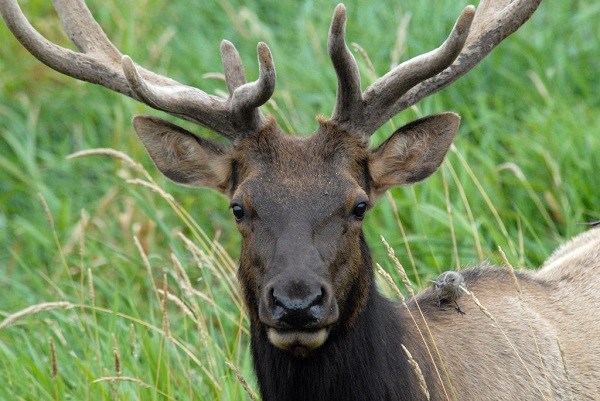
A study of elk and bears on an island in the Kodiak Archipelago will try to help balance game management and logging.
The Alaska Department of Fish and Game and its partners, including Kodiak area native corporations, are at the beginning of a two-and-a-half-year, $1.8 million-dollar study on Afognak Island.
Researchers hope it will lead to a long-term forest management strategy they can work on with native corporations that harvest the island’s trees.
Fish and Game area wildlife biologist Nate Svoboda said a varied terrain covers Afognak, everything from old growth forests to clear-cut areas from logging.
“It’s kind of a patchwork of units across the island, and so what we’re interested in looking at is how does that impact animal movements and resources,” Svoboda said.
Svoboda said they’ll look at how the elk use the landscape through the seasons.
“In the winter time, there’s been some research that some of these animals, elk in particular, need wind-firm stands, so in these harsh winters that we have where we get a lot of snowfall or high winds there’s been some research that suggests that elk need these wind-firm stands so they can go to get thermal covering, be in these warmer areas out of the elements,” Svoboda said.
Svoboda said elk may also graze in clear-cut areas because plants can grow better in those spots, and researchers will take a look at elk droppings to find out more about their diets. He said they’re interested in similar information when it comes to bears.
“Y’know, what resources are they using at different times of year? What habitats are they using? What are their movements throughout the year – different seasons and on an annual basis? But then also we’re looking at what impact if any are bears having on the elk population,” Svoboda said. “So, are bears eating elk calves for instance?”
At one point they’d radio-collared around 50 elk and 40 bears, but the numbers are still working themselves out. Svoboda said many of the collars fall off, especially when it comes to the male bears, which have thick necks and small heads.
“It’s like putting a collar on a funnel,” Svoboda said. “They can get it off pretty easy. And so, after we put 40 collars out, we went back and looked at the data, and about 15 of those collars had already slipped off in a matter of two weeks.”
Svoboda said collars are more likely to stay put on the female bears and the elk, but he says researchers were careful to make sure an animal can remove the collar if it really tries.
In addition to tracking the location of the elk and bears, researchers will take hair and blood samples and weigh the animals. By the end of the study, they hope to have a better idea of how the elk interact with the resources around them.
Kayla Deroches is a reporter at KMXT in Kodiak.




